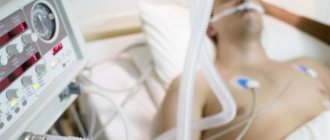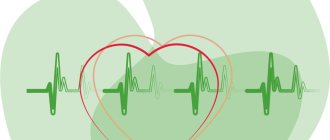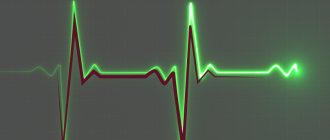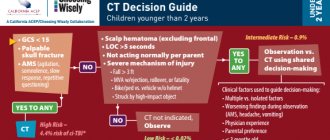Anesthesiologist-resuscitator
Smirnov
Igor Valerievich
18 years of experience
Leading anesthesiologist-resuscitator of the highest category, member of the European Society of Anaesthesiology
Make an appointment
Coma is a life-threatening pathology of consciousness caused by damage to brain tissue. The patient completely loses contact with the outside world. Coma can occur due to metabolic (intoxication with metabolic products or chemicals), organic (deformation of brain areas) reasons.
The key symptom is an unconscious state, the patient’s pupils do not react even to strong stimuli. To diagnose pathology, CT, MRI, and laboratory tests of blood plasma are used. Therapy is aimed at combating the cause of the coma.
Symptoms and signs of coma in adults
As already noted, the main symptoms of coma are the absence of any mental activity of the patient. Other symptoms of coma depend on the cause that caused damage to the brain structures.
- Body temperature indicators. Coma, which is caused by overheating, is accompanied by elevated body temperature (up to 43 degrees) and dry skin. Intoxication with alcoholic beverages and sedatives is associated with hypothermia (temperature up to 34 degrees).
- Inhalation/exhalation frequency. Slow breathing is a sign of a hypothyroid type coma (lack of thyroid hormones). Deep breathing is common in patients with pneumonia, brain cancer, and kidney failure.
- Blood pressure, heartbeat. A decrease in the number of heart contractions indicates that the person has fallen into a coma due to an acute disease of the heart muscle. Arterial hypertension is observed in patients who have become comatose due to a stroke. Low blood pressure indicates a diabetic coma, intoxication with sedatives, or a heart attack.
- Color of the skin. The skin turns cherry color if a person is poisoned by carbon monoxide. Blue ends of the fingers indicate a reduced concentration of oxygen in the blood plasma. Pale skin is typical for patients who have lost a lot of blood.
- Contact with the environment. With a mild coma, the patient can make different sounds, which suggests a favorable prognosis. As the coma worsens, the ability to make sounds disappears.
Are you experiencing coma symptoms?
Only a doctor can accurately diagnose the disease. Don't delay your consultation - call
Kinds
Who should not be considered a disease. This is the result of serious pathological changes. They damage brain tissue and disrupt the functioning of the central nervous system. The type of coma directly depends on the disease or mechanical damage that caused it. The less damage, the higher the chance of survival.
Diabetic coma
The reason for its development is the advanced stage of diabetes mellitus. Coma can be hypoglycemic or hyperglycemic. At the first, the glucose level goes off scale. The first sign of impending danger is the strong smell of acetone from the patient’s mouth. It is important to quickly establish a diagnosis and bring the patient out of a coma.
Hypoglycemic coma
It also develops in diabetes mellitus. Its reason, on the contrary, lies in a sharp decrease in blood glucose (less than 2 mmol/l). In the precoma stage there is severe hunger. It is characteristic that the patient experiences irresistible hunger, regardless of when he last ate.
Coma traumatic
The reason is a head injury, bruise in an accident, fall, fight, etc. This damages the skull and brain. Characteristic manifestations are nausea and vomiting. The goal of treatment is to restore blood supply to the brain and resume its normal functions.
Meningeal coma
The reason is brain intoxication due to the penetration of meningococcal infection into the body. A lumbar puncture will definitely be required. It will help to accurately identify the presence of infection. In precoma, this type is characterized by severe headaches. The patient has problems with simple physical functions. He cannot lift his leg in a supine position or straighten it. A test for the presence of Kernig's sign can be performed. The patient will not be able to bend the leg only at the hip joint. She will also involuntarily bend at the knee.
Another test is for Brudzinski's symptom. The patient's head should be tilted forward passively. At the same time, he will bend his knees. This movement is involuntary.
Another sign of this coma is that a rash appears on the skin, areas of necrosis form, including non-mucosal areas. These are tiny hemorrhages. They can also be observed on internal organs. This leads to a malfunction in their work.
Despite the listed groups of tests and symptoms, the final diagnosis is made after a lumbar puncture. If the cerebrospinal fluid is cloudy, has a high protein content, and a high number of blood cells, then the test is positive.
Coma cerebral
Occurs when brain tumors form. The previous disease develops slowly. Clinical symptoms are varied. It all starts with regular headaches. They are often accompanied by vomiting. Over time, the patient finds it difficult to swallow liquid food. He often chokes. He also has difficulty drinking. These are symptoms of bulbar syndrome. It can last quite a long time. The life and health of the patient is already at risk.
The sooner the doctor prescribes treatment, the higher the chances that the patient will live. Comatosis due to tumors can be very deep. Intervention by a neurosurgeon is often required. Even with a favorable outcome, disability is possible. All sorts of complications from the central nervous system, partial and even complete paralysis are common.
During this period, it is important to provide the patient with full qualified therapy. Otherwise, a coma may develop. The tumor itself can be easily detected using MRI and CT. Analysis of the cerebrospinal fluid will show abnormally high levels of protein and leukocytes. It is important to remember that if there is a tumor in the posterior cranial fossa, it is strictly forbidden to take a puncture of the cerebrospinal fluid. This can cause death.
Similar symptoms are observed with a brain abscess. But this species has its own differences. Coma is preceded by inflammatory processes (otitis, sinusitis, tonsillitis, etc.), an increase in temperature, and the level of leukocytes increases. It is important here that the patient is examined by an infectious disease specialist.
Coma epileptic
This is a consequence of a severe epileptic seizure. In this case, the patient’s pupils will be dilated, the skin will become pale, and most of the reflexes will decrease. A characteristic sign that coma was a consequence of epileptic seizures is biting on the tongue. Involuntary emptying of the intestines and bladder is also observed. The pulse is frequent, the pressure is low. As the condition worsens, the pulse will become thready. Shallow breathing can be replaced by deep breathing and vice versa. Cheyne-Stokes respiration may be observed. It consists in the fact that between periods of deep and shallow breathing there are short pauses when a person stops breathing altogether. Then the breath appears again.
When the condition worsens, blood pressure drops to a maximum and reflexes completely disappear. It is extremely important that the patient receives medical help as soon as possible. Otherwise, death occurs.
Coma hungry
The reason for its development is the third degree of dystrophy. Fasting leads to it. Often people who are on a protein diet bring themselves to such a pathological state. In this case, the body experiences a protein deficiency. His role cannot be underestimated! Protein performs essential functions in the body. Its deficiency causes serious disruptions in the functioning of almost all systems and organs. This includes serious depression of brain functions.
This pathological condition develops gradually. The first alarm signal to which the patient must respond is hungry fainting. Over time, they become more frequent, as the body experiences an increasing lack of vital protein. Fainting is accompanied by increased heartbeat, general weakness, and rapid breathing. When a hungry coma sets in, a person’s temperature drops significantly, blood pressure drops, and convulsions appear. In this case, the intestines and bladder may spontaneously empty.
A blood test will reveal reduced levels of white blood cells, cholesterol, protein, and platelets. The amount of glucose in the blood is greatly reduced.
Artificial coma
In case of severe traumatic injuries and other conditions, the patient may be put into a coma on purpose. This is a medicinal form, artificial.
Causes
Why do they fall into a coma? The main causes of this condition in adults:
- organic factors (stroke, gunshot wound, bruise, bleeding into the brain);
- internal chemical compounds. They are metabolic products that appear due to organ diseases;
- external chemical compounds. Poisoning of the central nervous system can occur due to an overdose of drugs, sedatives, or neurotropics.
The reasons listed above explain how people fall into a coma. Particularly worth highlighting is a factor that combines signs of organic and chemical causes. This is an increase in pressure inside the skull. A similar pathology is observed with head injuries and neoplasms in the nervous system.
Probability of survival after a stroke
A stroke is a disruption of the blood supply to the brain. It happens for two reasons. The first is blockage of blood vessels in the brain, the second is bleeding in the brain.
One of the consequences of cerebrovascular accident is coma (apoplectiform coma). In case of hemorrhage, a 3rd degree coma may occur. The chances of surviving a stroke are directly related to age and the extent of the damage. Signs of this condition:
- Lack of consciousness.
- Change in complexion (becomes purple).
- Loud breathing.
- Vomit.
- Trouble swallowing.
- Slowing heart rate.
- Increased blood pressure.
The duration of the coma depends on a number of factors:
- Coma stage. In the first or second stage, the chances of recovery are very high. With the third or fourth, the outcome is usually unfavorable.
- Condition of the body.
- Patient's age.
- Equipping with necessary equipment.
- Patient care.
When to see a doctor
If a person falls into a coma, you should immediately consult a doctor. There can be no exceptions here. First of all, the patient will need the help of a resuscitator who will try to quickly remove the patient from the pathological condition. If resuscitation measures have no effect, treatment of the patient must be started.
Which specialist will treat the patient depends on the cause that caused the disturbance in the state of consciousness. You can seek qualified medical help at our clinic. We have specialists who understand how to work with people who have fallen into a coma. The choice of a doctor who will treat coma in the Central Administrative District depends on the cause that led to the development of the pathology.
What does the forecast depend on?
Coma is not just an unconscious state, but a sign of severe damage to the nervous system due to brain damage. Like any pathological condition, it has degrees of severity.
- First degree coma is called stupor. Reactions to external stimuli are preserved, but inhibited.
Muscles are tense. The look is floating. Pain sensitivity is reduced. The person does not understand what is being said to him. With timely treatment, a person recovers completely within 10–14 days. - Second degree coma is called stupor. There is no consciousness.
Breathing is impaired. The pupils react poorly to light. No reaction to pain. The movements are chaotic, the person twitches convulsively. The sphincters are relaxed. Provided adequate resuscitation measures are taken, the person regains consciousness after a few days. Full recovery may take several months or a year. - The third degree is called deep coma. The person is unconscious.
The pupils are constricted and do not react to light, there are no reflexes. Blood pressure is reduced. Breathing is shallow, frequent, possible pauses in breathing. Movements are jerky or absent. The person may regain consciousness, but the likelihood of a vegetative state is high. On the other hand, partial recovery is possible. This is the case when especially much depends on the efforts of doctors, their qualifications, the availability of modern equipment and the necessary drugs in the clinic. - The fourth degree is an extreme coma. Reflexes and muscle tone are absent.
The pupils do not react to light. Body temperature and blood pressure are reduced. A person cannot breathe on his own and lives only thanks to life support machines. This condition can last for a long time - months, years, even decades. The changes that have occurred in the brain are irreversible, so recovery from a stage 4 coma will most likely mean a vegetative state. But even in this case one cannot despair.
When we are asked about the prognosis for recovery from a coma, we answer based on objective factors, and these are:
- Age. The best prospects are for patients under 45 years of age.
- Volumes of damage. The wider the area of brain damage, the more neurons in the brain are lost, and the less likely it is to recover. And vice versa.
- Localization of the lesion. The restoration of certain functions depends on which area of the brain has been damaged. Damage to large vessels is more dangerous than damage to small ones.
- Fast first aid. The sooner it was provided, the smaller the volume and severity of the lesion, and the higher the chances of a favorable outcome.
But these are only objective factors. We know that a lot depends on our efforts. At the Medica24 international clinic, we have the most modern equipment, the greatest opportunities for drug therapy, and we do everything to use them with maximum results.
Make an appointment with a specialist
Message sent!
expect a call, we will contact you shortly
Diagnosis of coma in adults
To diagnose coma 1, 2, 3 degrees in the center of Moscow, the following methods are used.
CT. One of the most informative methods of radiation diagnostics. The advantages of this procedure include the following:
- fast scanning;
- it is possible to obtain thinly sliced images (up to 0.1 cm) without increasing the radiation dose to the patient;
- increased resolution, which allows you to obtain clear images of internal organs.
MRI. A modern diagnostic method through which the doctor can obtain images of sections of soft tissues and organs in different planes.
Blood analysis. Performed to determine the concentration of hormones in the blood plasma.
Bottom line
We have given the most common classification. Coma is an extremely serious condition. Cerebral circulation is seriously impaired. Extensive swelling may develop. This is a direct threat to life. Nobody knows how long it will last. Doctors can only eliminate the cause and stabilize the condition. Unfortunately, there are frequent cases of death due to the development of coma of the 3rd and 4th degrees. The risk group is the elderly. They are more likely to develop coma. At the same time, their body reacts worse to treatment. In infants, coma can develop with prolonged umbilical cord entanglement.
Myths and dangerous misconceptions in the treatment of coma in adults
Based on Hollywood films, people might have the idea that a first-degree coma is a kind of vacation, a break from the outside world. In the movies, the patient after a coma looks fresh and rested. However, in reality this is not the case. Many patients never fully recover after emerging from a comatose state. It is not uncommon for a person to remain disabled and bedridden for the rest of his life. For this reason, the family of a person who has fallen into a coma needs to prepare for long-term care for their loved one and provide him with moral support.
Chances of survival after an accident
About thirty thousand people a year die as a result of road accidents and three hundred thousand become their victims. Many of them become disabled as a result. One of the most common consequences of a road accident is traumatic brain injury, which often causes a person to fall into a coma.
If, after an accident, a person’s life requires hardware support, and the patient himself has no reflexes and does not respond to pain and other stimuli, a 3rd degree coma is diagnosed. The chances of survival after an accident that leads to this condition are negligible. The prognosis for such patients is disappointing, but there is still a chance of returning to life. It all depends on the degree of brain injury as a result of the accident.
If a stage 3 coma is diagnosed, the chances of survival depend on the following factors:
- Degree of brain injury.
- Long-term consequences of TBI.
- Fracture of the base of the skull.
- Fracture of the cranial vault.
- Fracture of the temporal bones.
- Concussion.
- Trauma to blood vessels.
- Brain swelling.
Prevention
Preventive measures are aimed at prompt treatment of diseases that can lead to a coma. If a person has suffered a stroke, he needs to periodically visit a doctor so that he monitors the condition of the patient’s body and can detect signs of coma in time.
You also need to stop drinking alcohol and drugs. People suffering from alcoholism and drug addiction are at risk. They are unable to control the amount of ethyl alcohol and drugs they take, so they risk getting an overdose and falling into a coma.
It is extremely important to monitor your health. You cannot ignore the recommendations of doctors and other specialists. A proper daily routine, sleep and eating patterns, giving up bad habits are just the minimum of what every person should remember.
If there are any contraindications to playing serious sports, then all of them should be abandoned. Physical activity is allowed, but it is important to maintain its degree. In some cases, only light exercises in gymnastics, fitness and any other sport where the load is minimal are allowed.
Any deviation from the general rules (especially for those people who are at risk) can lead to undesirable consequences. It is important not only to remember this, but also to follow all recommendations.
If you have any questions or do not know whether excessive loads are allowed for you, it is better to seek advice from relevant specialists. If necessary, they will carry out a series of diagnostic measures and, based on the results obtained, will give you a conclusion.
Prevention is the best measure in the fight against any pathology, regardless of its type and severity. And the health of each person is in his own hands. Doctors and other specialists can only guide you along the right path.
Danger of condition
Coma is dangerous because the brain suffers from hypoxia. At the same time, its cells die. The primary task is to resume its blood circulation and restore functions. The patient undergoes detoxification measures. In case of uremic type, hemodialysis may be prescribed. When hypoglycemic - glucose.
If intoxication begins, shock develops, and brain tissue experiences energy deficiency. The consequences may be as follows:
- The condition is getting worse.
- Lethality sets in.
- Energy deficiency increases, oxygen starvation of the central nervous system increases, and neurons die. Even if such a patient survives, the risk of disability is high.
How to call a resuscitator
If you decide to go to our clinic in the center of Moscow for medical help, dial the ambulance number -. A team of our specialists will arrive at the address you specified to transport the patient to a medical facility and provide him with first aid.
All our specialists are highly qualified and have extensive medical experience. All diagnostic measures are carried out promptly. This is also due to the availability of modern equipment. Our doctors choose the most optimal treatment method, taking into account the characteristics of the disease and the patient’s body.
Our clinic is located at the address: Moscow, Central Administrative District, 2nd Tverskoy-Yamskaya Lane, building 10. The nearest metro station is Mayakovskaya (5 min walk).
Remember that if a person falls into a coma, he requires emergency assistance from specialists. The slightest delay can lead to the death of the patient.
For family and friends
In addition to feature films, there are many stories, oral and written, about how relatives refused to believe in the hopelessness of a loved one and were rewarded with his subsequent awakening and restoration. Here you need to keep in mind that, as a rule, in such stories there is no documentary data about what exactly doctors understood by the word “hopeless” and whether all 9 signs of brain death were recorded and recorded.
As for recovery after a long coma, in cases of famous people followed by numerous fans, we observe a very slow and far from complete recovery. Miracles did not happen, sadly, neither with Michael Schumacher, nor with Nikolai Karachentsov, who received excellent medical care and care.
For loved ones, however, the very fact that a loved one is alive, provides the opportunity for care and at least limited contact, is often a joy. Here is the story told by a woman who fought for 19 years to restore her son, who was injured in an accident and spent 4 months in a coma. Nathan, 36, remains severely disabled, but his mother is happy that they are together.
And one more inspiring fact for the relatives of patients in a coma.
In January 2015, the journal Neurorehabilitation and Neural Repaire published data from a study of American doctors demonstrating the fact that comatose patients recovered faster and better than other patients in the same condition if they listened to recordings of their family members' stories. about the events of family history known to them. These were the voices of parents, brothers and sisters, whom the patients listened to through headphones. Using magnetic resonance imaging while listening to the recordings, the scientists were able to track increased neural activity in the areas of the patient's brain responsible for language and long-term memory, and after 6 weeks of such stimulation, the patients began to respond better to other external stimuli.
Here are recommendations for relatives and friends of a patient in a coma, posted on the UK Department of Health website:
- When visiting a patient, tell him who you are; Try to be positive in conversations.
- Talk about how your day went, as if the patient understood you.
- Keep in mind that everything you say in the presence of the patient may be heard by him.
- Show him your love and support, even if just by sitting next to him and holding his hand.
- Let him listen to his favorite music through headphones.
Of course, conversations between relatives and patients are not a miracle cure for a complete cure, however, contrary to the fair criticism of Dr. Vidzhdiks, the “Talk to Her” recipe turns out to be effective. And if art proclaims the limitlessness of a person’s ability to awaken another person, dear and loved, to life, then science recognizes our limitations, and nevertheless confirms that feelings and relationships can become the bridge through which our loved ones are able to return to us.
Causes of alcoholic coma
The main cause of alcoholic coma is the consumption of a large dose of ethyl alcohol in a short period of time. The approximate amount of alcohol that can cause an alcoholic coma is 420 grams of 40% vodka or its equivalent. The weight, health and age of a person also matter. A sudden ingestion of alcohol into the human body leads to intoxication, oxygen starvation, and failure of vital organs. Under certain conditions, intoxication leads to alcoholic coma.
It is important to understand that these consequences of alcohol use do not only apply to victims of alcoholism. Acute alcohol intoxication can occur regardless of the dose and frequency of drinking.
The causes of poisoning and alcoholic coma include:
- age of the drinker (ethyl alcohol will affect the body much more strongly on adolescents and older people);
- body weight (a person with a fragile build gets drunk faster and, accordingly, tolerates the effects of alcohol more difficult);
- quality of alcohol;
- individual reaction to alcohol;
- health status, body temperature, blood pressure;
- long-term abstinence from drinking;
All these factors can increase the risk of intoxication, the consequence of which is alcoholic coma.
Vegetative state: how I was a vegetable
I don't remember how I came out of the coma. I remember only a few moments: how I was in intensive care and how they sent me down for rehabilitation. What helped me move from being a vegetable to being a human? I'll tell you in order.
When my mother found out that I had crashed, she found money somewhere, bought a ticket and came the next day, when they had already brought me from Vyselok. She was shocked: I was in a coma with severe injuries, and the doctors could not console her. They say: “We can’t say anything. Whether he will live or not is unknown.”
The mother cries and takes pills, prays... The grandmother called and said: “You can’t help with this! Pull yourself together and think about how you can help him.”
After this, the mother insisted and began to come for 15–20 minutes every day. She was allowed to come in, but only for a short time. After a month and a half, I came out of the coma. The mother came and was told that there was no threat to life, but there was no positive dynamics either. I entered an elementary (vegetative) state, that is, I was a vegetable, looked at one point and did not pay attention to anyone. I was connected to a ventilator, the impacted lungs did not open, enteral nutrition, a catheter, stents were sewn to my neck, since the veins in my arms could no longer be found (they did stenting). The doctors did not see any prospects in me and wanted to discharge me to the hospital at my place of residence - with a tracheostomy, with food in my nose, connected to various devices. If they had sent me, I definitely wouldn’t be in this state now.
For the transfer, an intensive care unit was needed and to free up space in the intensive care unit of another hospital. But my mother managed to persuade me to leave me for a month. From a large intensive care unit, where there are 15 people in bed, all of them heavy, and the instruments beeping every minute, like in scary movies, I was transferred to a three-bed ward. And there, finally, my mother was allowed to come twice a day for 30–40 minutes.
Mom started massaging me: using oriental massagers, a roller, and needles, she massaged my feet, fingers, hands, and sensitive places. The skin on my feet was peeling off from the antibiotics. I behaved restlessly, I did not sleep since I came out of the coma, since the light was not turned off. In the three-bed ward, I began to experience tachycardia and high blood pressure.
I was in a stable and serious condition: I lay and always looked straight ahead, rarely blinking. My mother stood above me, talked and at times thought that I was looking at her, then she turned her head away, and I continued to look at the same point.
On one of these days, she saw that I was lying, excuse me, having emptied. Mom started swearing because this was not the first time. Then she was allowed to wash me, and she saw a large bedsore on my tailbone. It appeared because the bed was at a slight angle, they constantly lifted me up and I rolled down. The bedsore could not be healed for more than two months.
I think this painful moment, together with the massage, gave impetus to positive dynamics. When I started moving my right arm and leg and pulled the tube out of my nose (nutrition), thank God, they didn’t put it back. Mom just came, the doctor allowed her to try to give me something to drink from a syringe, and I began to swallow - drop by drop, but I swallowed.
A day later, my mother brought me juice for the children and also gave me 10–20 g from a syringe, then more. That is, the swallowing and taste buds worked. During these days I began to move on the bed more and more intensely.
Recovery after a coma
Rehabilitation after a coma becomes extremely important: a set of measures that can help you get closer to or return to your previous way of life. Everything is subject to calculation - from the load level to the program itself. The Clinical Brain Institute has been successfully dealing with these problems for quite a long time. We are ready to offer effective rehabilitation programs developed with special care, which are selected individually for each patient. Our specialists, being professionals in their field, are also very responsive and attentive people, which is something that patients so often lack!
Treatment prices:
| Service | Price, rub) |
| Types of therapies | |
| Standard detoxification therapy | 3 500 ₽ |
| Double Detox Therapy | 6 000 ₽ |
| Enhanced Detoxification Therapy | 7 500 ₽ |
| Maximum detoxification therapy | 9 500 ₽ |
| Quick sobering up at home | 7 500 ₽ |
| Hospital at home 1 day | 22 000 ₽ |
| Advanced hospitalization | 15 000 ₽ |
| Treatment in hospital | |
| Accommodation | |
| Economy chamber (6 beds) | 2 000 ₽ |
| Standard room (4 beds) | 3 000 ₽ |
| Increased comfort (2 seater) | 5 500 ₽ |
| VIP chamber (1 person) | 12 500 ₽ |
| Individual post 24/7 | 5 000 ₽ |
| Medical and social rehabilitation 21 days | 140 000 ₽ |
| Service | Price, rub) |
| Initial consultation with a narcologist | for free |
| Consultation with a psychologist | 3 000 ₽ |
| Psychiatrist consultation | 5 000 ₽ |
| Coding at home Torpedo | 7 500 ₽ |
| Express output and encoding (doublet) | 13 500 ₽ |
| Coding using the Dovzhenko method | 12 000 ₽ |
| Hypnosis classic session | 13 000 ₽ |
| Ericksonian hypnosis session (NLP) | 8 000 ₽ |
| Coding method Torpedo | 5 500 ₽ |
| Double block | 8 000 ₽ |
| Esperal injection for 1 year | 9 900 ₽ |
| Tetlong for 3 months | 10 500 ₽ |
| Esperal gel for 1 year | 15 000 ₽ |
| Selincro course of therapy | 12 500 ₽ |
| Implantation of Disulfiram for 1 year | 18 000 ₽ |
| Vivitrol injection for 1 month | 26 000 ₽ |
| Naltrexone stitching for 3 months | 35 000 ₽ |
| Neuroimplantation Prodetoxon for 6 months | 47 500 ₽ |
| Narcopsychotherapy session | 50 000 ₽ |
| Neutralization of encoding | specify |
| Psychodiagnostics / pathological diagnostics | 7 500 ₽ |
| Psychotherapy session | 5 000 ₽ |
| Family psychotherapy | 6 000 ₽ |
| Outpatient rehabilitation in Moscow | 33 000 ₽ |
Expand
ANONYMOUS TREATMENT OF DRUG ADDICTION
How to get to us
A team of doctors will quickly arrive at your address, carry out the first resuscitation measures and urgently deliver the victim to the intensive care unit of a drug treatment clinic.
Article verified by an expert
Terekhova Anna Vladimirovna
psychologist-consultant on socio-psychological work with addicted clients and their families. More than 10 years of experience.
Similar articles:
What is detoxification and why is it important in treating chemical dependency?
What to do if a person drinks and cannot stop
The effect of alcohol on the human body
Codependency and how to deal with it
Children's drug addiction
One comment on “Drug coma”
- Alexandra:
June 29, 2021 at 10:57 pm
Drug coma is a condition characterized by depression of the central nervous system caused by drug use. Coma is often a consequence of taking opiates, barbiturates, salts and spice. Due to the powerful effects such psychoactive substances have on the body, even in microscopic doses, an overdose is more than likely.
Answer











